Building Clinical Apps with openEHR
Why?
openEHR provides a robust way to build any clinical application while separating the data from the application logic. Applications come and go, but healthcare data is for life.
The way openEHR achieves this is by defining archetypes and templates - think of them like database schemas, but with the ability to model data on 2 levels.
Archetypes
The first level is the archetype - A maximal dataset that’s agreed upon by a global community of clinicians and informaticians. Think of these as lego bricks that have been crafted to perfection over years of trial and error. For instance, the blood_pressure.v2 archetype you see below has gone through almost multiple revisions and has about 23 data points currently. This represents almost anything you will need to capture when it comes to the concept of “blood pressure”.
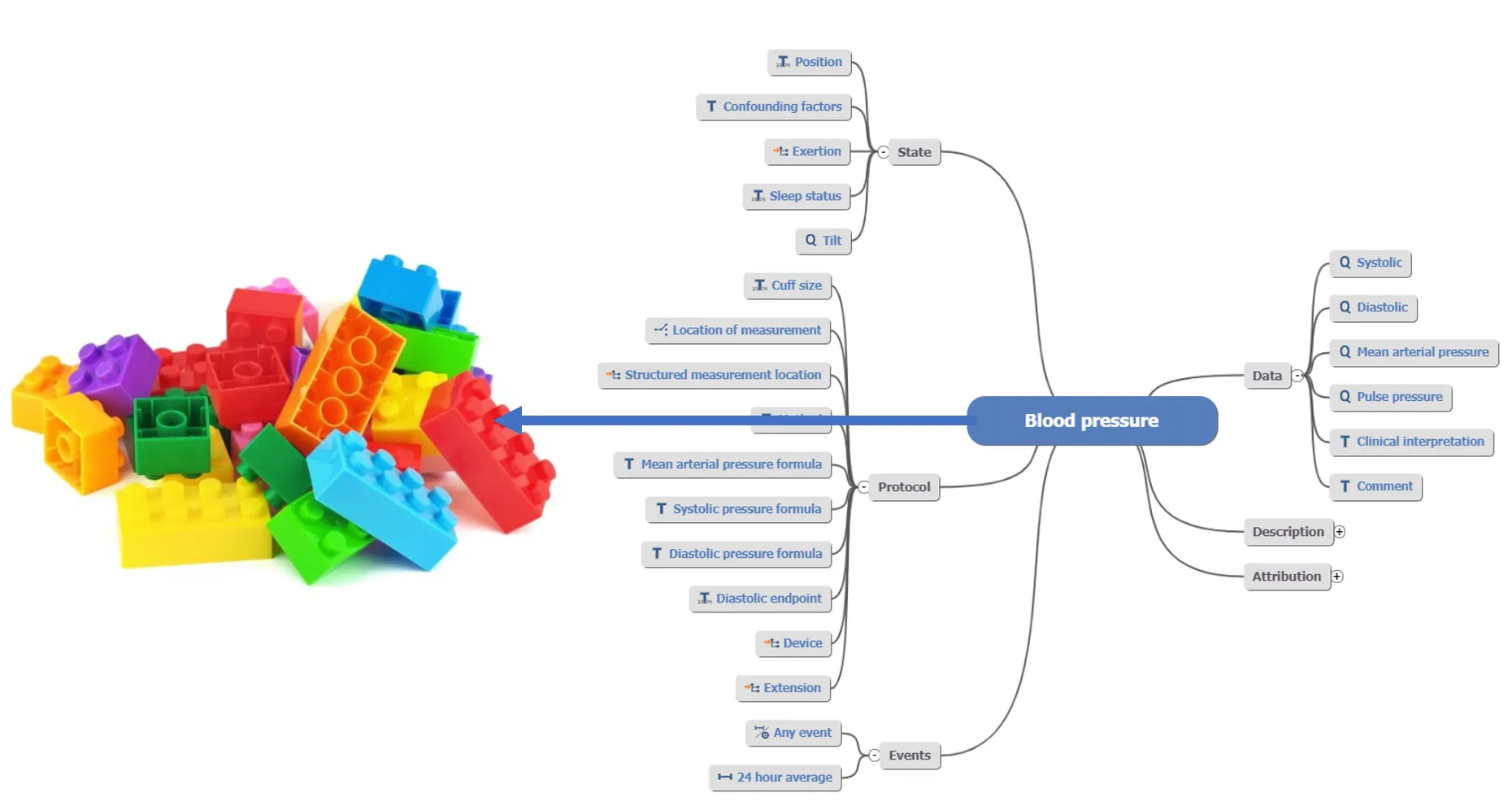
Templates
The second level is the template - The same archetypes can be put together in different ways according to the situation. Here, you can get creative and cut out data points from the archetypes you don’t need and include others you do. For example, a General Practitioner may only need the systolic and diastolic data points from the blood pressure archetype, whereas a cardiologist may need the position, location of measurement, and a 24-hour average.
These variations along with many other things can be expressed in a template.
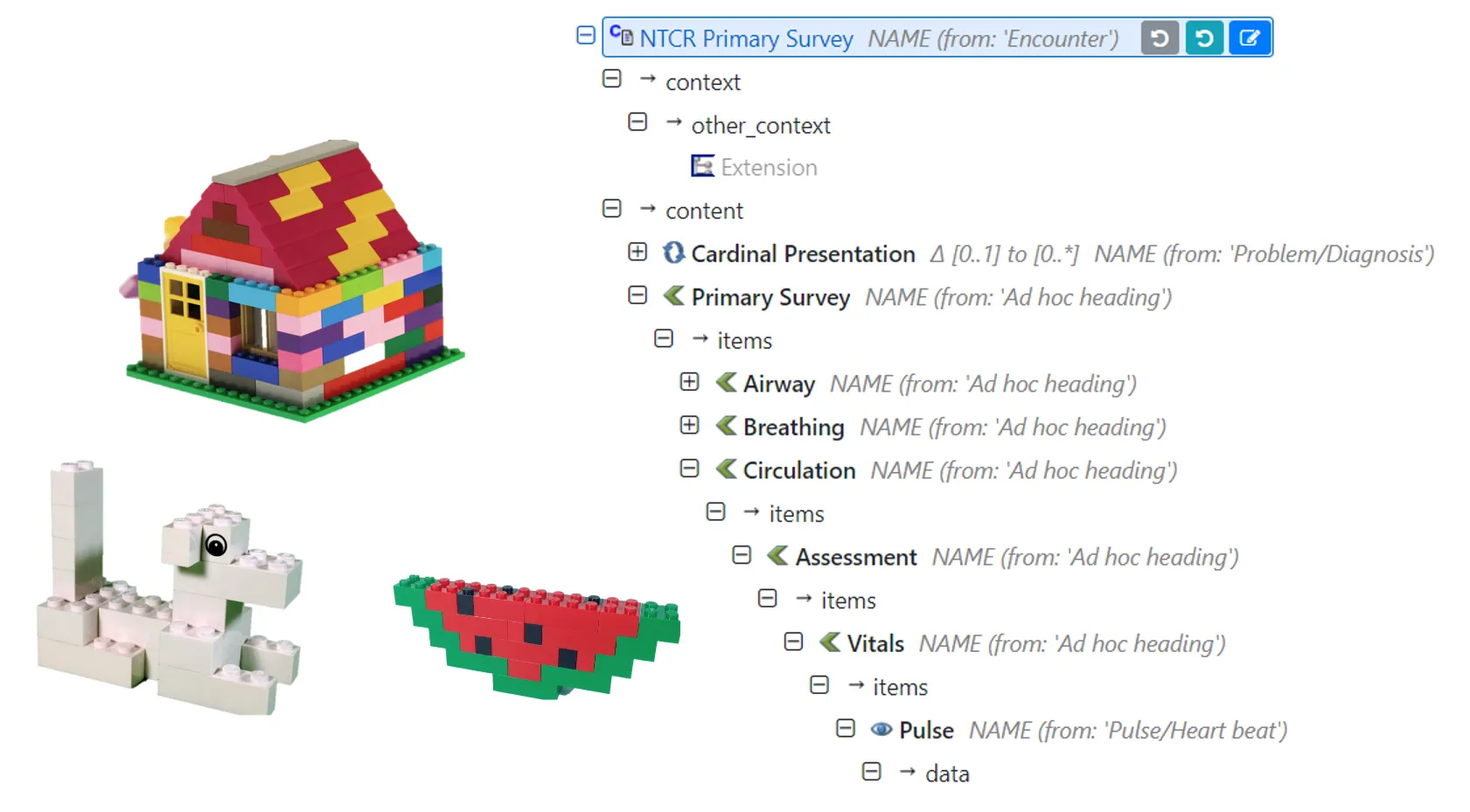
Clinical Data Repository
The templates are posted to an openEHR Clinical Data Repository through its REST API. Open-source openEHR CDRs like EHRBase are becoming very popular for this.
The applications that need to persist information then use the same REST API to commit data as compositions and can query the data using the AQL API.
The advantage of this approach is that the meaning of each concept, for example, “blood pressure” still remains. AQL can be used later to get all blood pressure values - limiting to both within a template or otherwise. This allows applications to interoperate without knowing about each other. They just need to use the correct archetypes to record clinical data.
More importantly, the alternative - which is to store the clinical data in a format specific to the application is prevented. This prevents data silos from forming in the first place and completely avoids the expensive “mapping work” to make these applications interoperable.
You can find more views on why openEHR is the right decision for clinical data in these articles below.
Why openEHR is Eating Healthcare - A blog post by Alastair Allen, CTO of Better
What is openEHR and why is it important? - NHS Whales - technical evaluation into openEHR
Creating an openEHR Template
Before we get started with the code, we need to create an openEHR template. Let’s do that first.
Download archetypes needed for the form from Clinical Knowledge Manager (CKM)
Archetypes needed for your system can be scoped out from openEHR’s Clinical Knowledge Manager website and downloaded. Download the Archetype files in ADL format and make sure to include at least one Root Archetype. You can also download all archetypes by going into Archetypes -> Bulk Export -> Click the Bulk Export button.
 Downloading Archetypes in CMK
Downloading Archetypes in CMK
Create a new repository in Archetype Designer
Archetype Designer is a tool provided by Better to create templates and archetypes. If you cannot find an archetype specific to your needs, you can create one on Archetype Designer. But in this guide, we’ll be using the archetypes from the openEHR CKM.
 Creating a new Repository in Archetype Designer
Creating a new Repository in Archetype Designer
Import all the archetypes downloaded to the repository
Open the newly created Repository, click the import button and select all the archetypes downloaded and click Upload All to upload the archetypes. You can also directly upload the .zip file you downloaded in the bulk exoprt process.
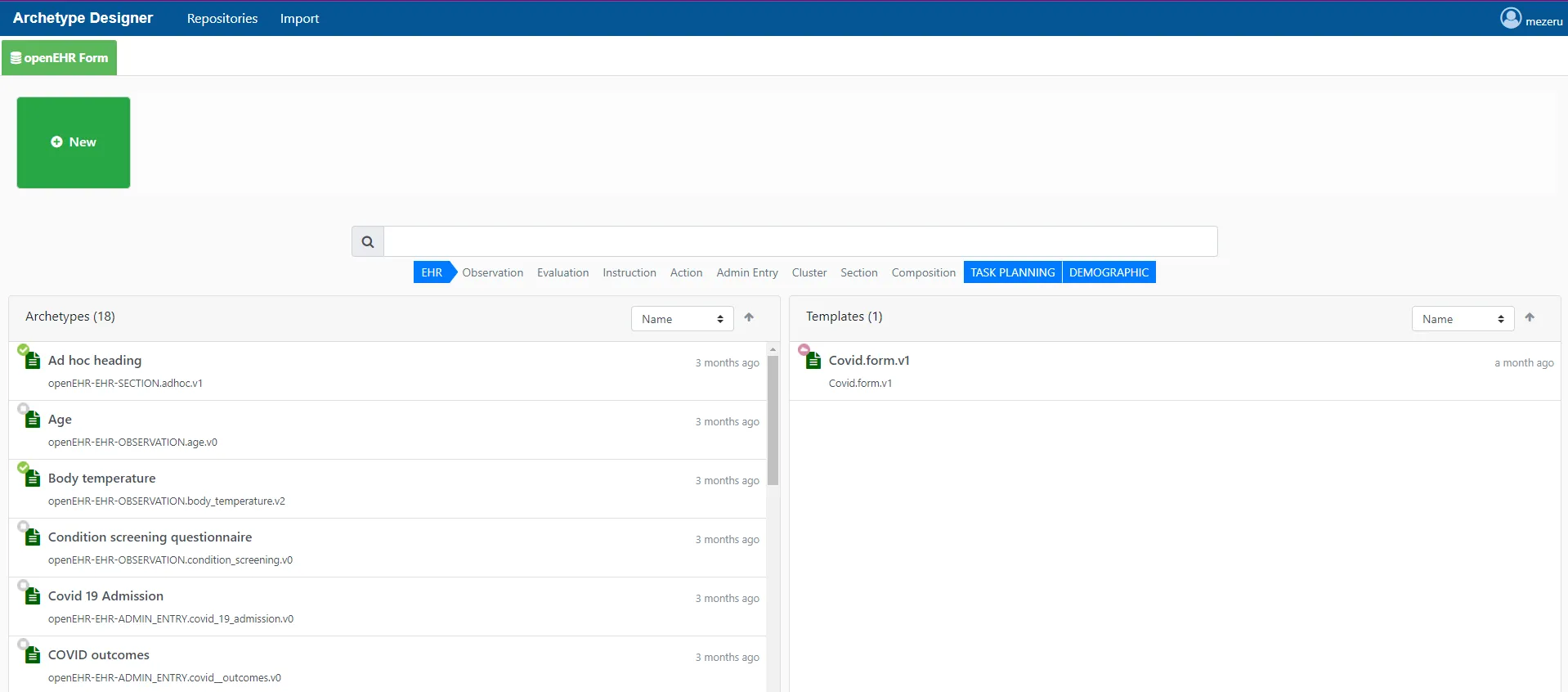 Archetypes Imported in the Repository
Archetypes Imported in the Repository
Create a new template
Select ‘New’ and ‘Template’ to create a new template. You will have to select an RM Type and a Root Archetype id and give an id for the template.
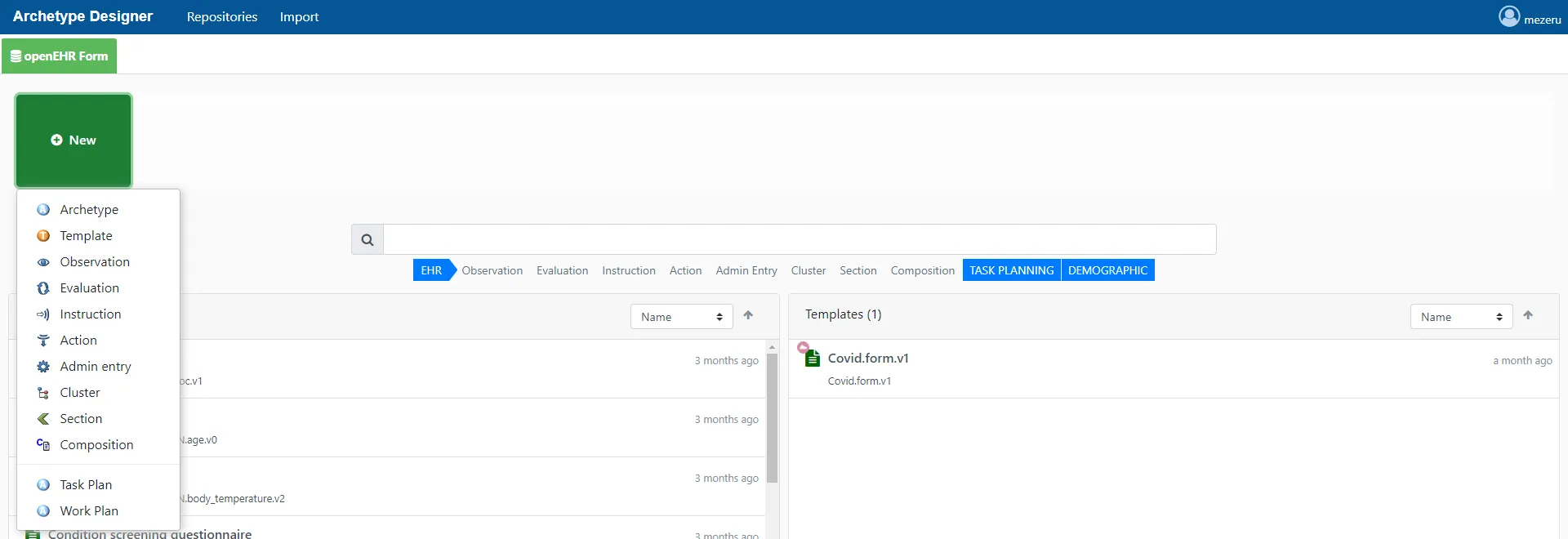 Clicking the New button
Clicking the New button
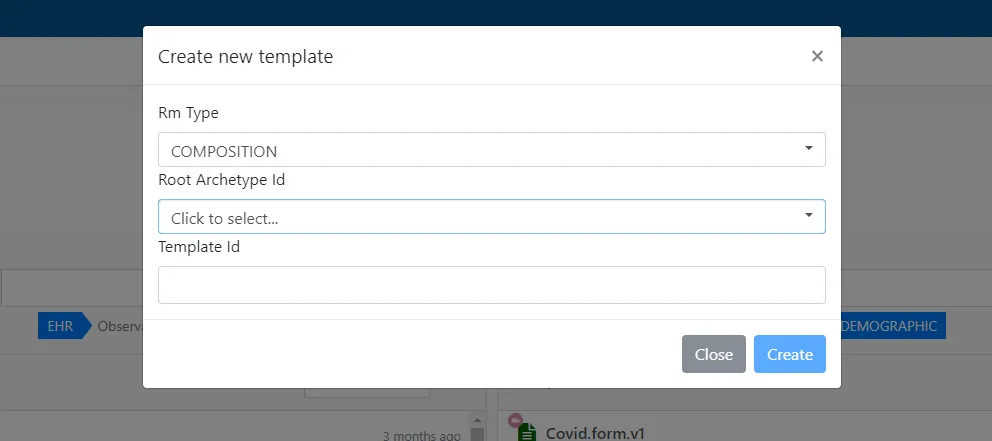 Creating a new template
Creating a new template
Add the imported archetypes as required to the template
After following the above steps a blank template will be created. Add your imported archetypes by pressing the ”+“(add) button on “content”. Customize your template according to the requirements, you can deselect attributes of archetypes that are unnecessary.
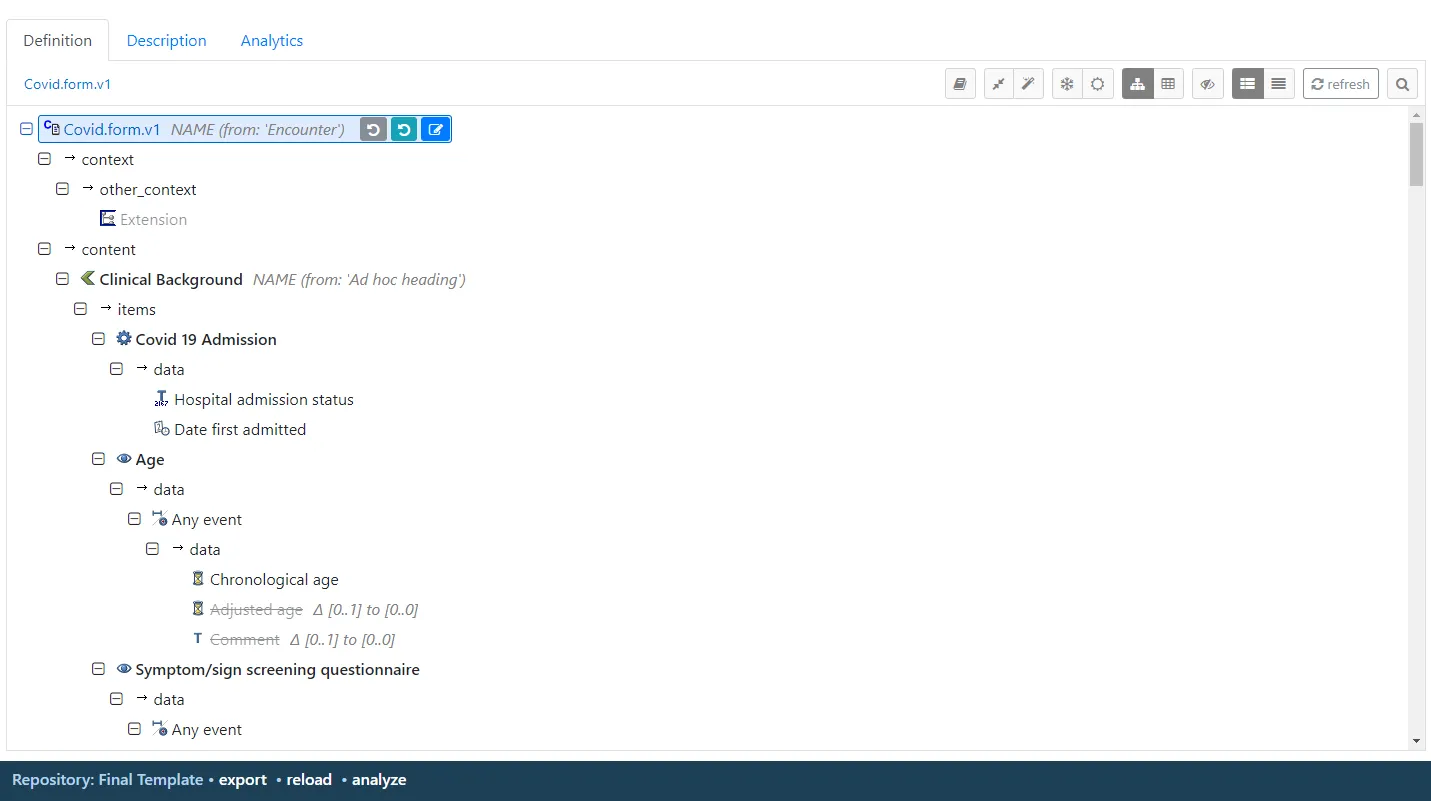 Adding archetypes to the template
Adding archetypes to the template
Export the Template
After you are done editing your template, click export and select “Web Template” while exporting. This will export your template in a JSON format which will be used to create Clinical forms.
Export the template in OPT format also, you will need to post this file to openEHR server for posting compositions.
 Exporting the template
Exporting the template
For more information on how to create an openEHR template, watch this video:
Setting up the openEHR CDR
EHRbase can be set up either by using the Medblocks or by following EHRbase’s official documentation.
Once set up, you should have access to the openEHR and ECIS REST API on your localhost at http://localhost/ehrbase/swagger-ui.html
Setting up the Application
Initialize a Vite Application
We’ll now create a Svelte application using Vite to create a single-page application.
Install npm and node. Create a new svelte project by using Vite:
npm init vite@latestFill out the other details as necessary and open VsCode in the project’s root directory.
Setup Medblocks UI VSCode Extension
Open VsCode and navigate to the tab (Ctrl + Shift + X). Search for Medblocks-UI and install the Medblocks UI VsCode Extension.
https://marketplace.visualstudio.com/items?itemName=tornadoalert.medblocks-ui
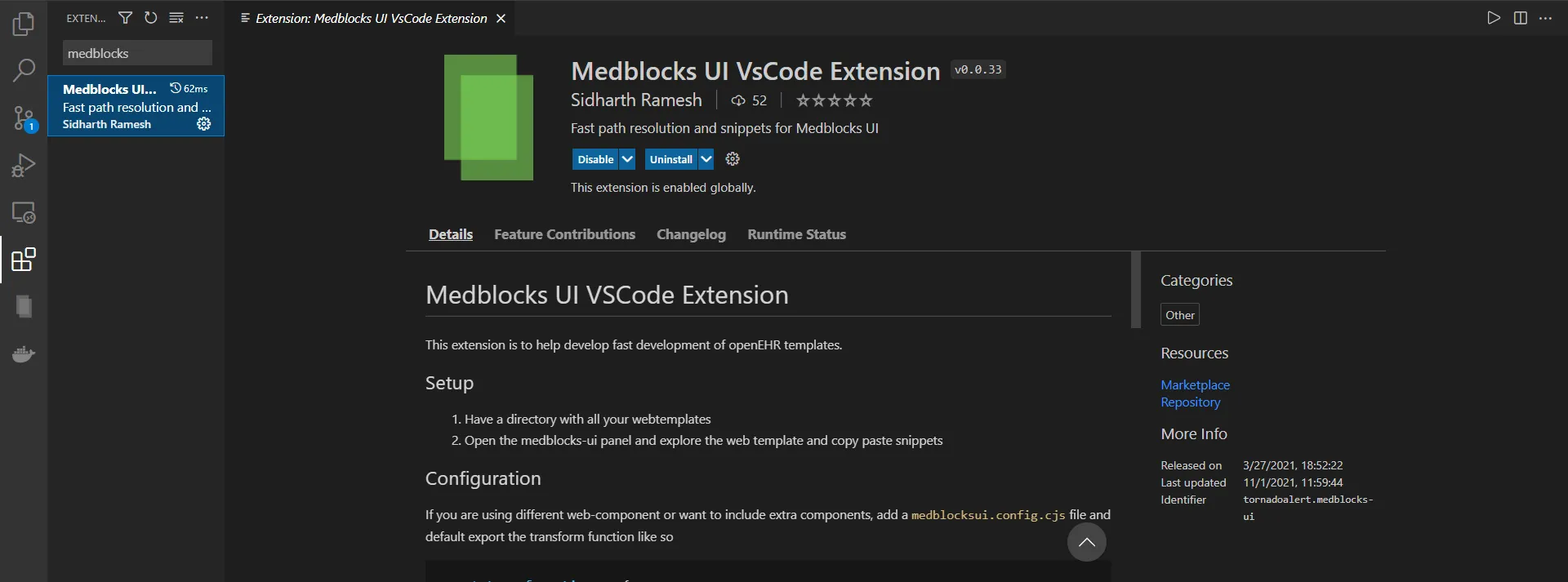 Installing Medblocks-UI extension
Installing Medblocks-UI extension
Install Medblocks UI npm package and import it into your app
Use the npm install command given below to install Medblocks-ui in your app
npm install medblocks-uiUse the code snippet given below to import the packages in your main.ts file
import "medblocks-ui";
import "medblocks-ui/dist/shoelace";Import the template in your app
Create a folder with the name “templates” in the base directory of your app and paste your exported web template (JSON) into that folder.
 Using Medblocs-UI extensions
Using Medblocs-UI extensions
Use Medblocks Extension to generate JavaScript code for a Clinical form
Navigate to the Medblocks Extension Tab in VsCode, it will automatically detect the template and generate a JavaScipt code for a Clinical Form from your template.
 Automatic code for form generated
Automatic code for form generated
Using the extension to create forms
Click the clipboard icon to copy all the code generated and paste it into your app
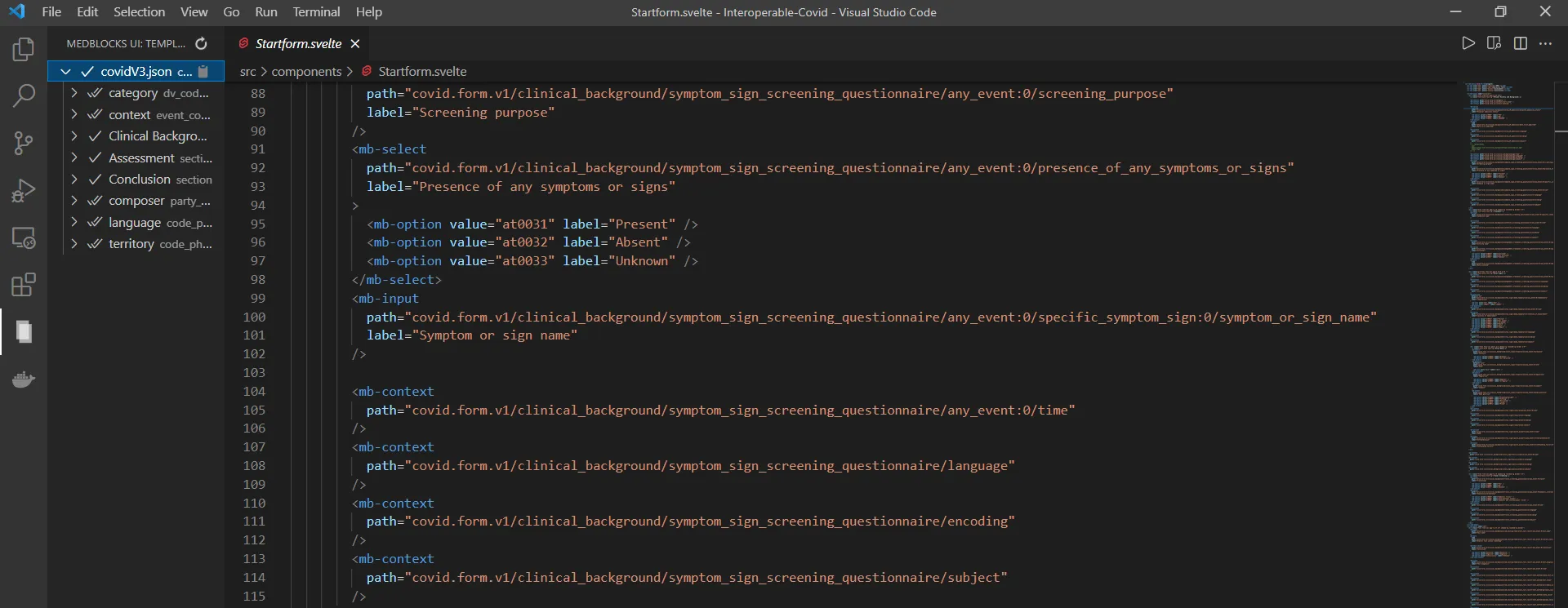 Form code generated based on the template
Form code generated based on the template
Make it look better
The code generated will contain limited CSS, so you can use CSS Frameworks to make the UI look better.
To add TailwindCSS to your project and customize, follow this guide: https://tailwindcss.com/docs/installation
 UI improved by adding CSS
UI improved by adding CSS
Posting the compositions to the openEHR server
Don’t forget to post the template to the openEHR server before posting compositions.
To post the clinical data of a Patients to the CDR, use axios package and create a new instance of axios for the openEHR server.
export const openehr = axios.create({baseURL:"(insert BaseUrl of the openEHR server)",
headers: {
Accept: "application/json",
}});Add the following post request to the onSubmit method of the form:
openehr.post("/composition", e.detail, {
params: { format: "FLAT", templateId, ehrId },
})- templateId contains the template ID of the composition
- ehrId contains the EHR UUID of the patient
- e is the instance of the form element
You can now start posting compositions to the openEHR server. To fetch data from the openEHR server, use Archetype Query Language (AQL)
To see a collection of example forms, check out the repository: https://github.com/medblocks/all-forms
You can also follow this video for a better understanding: